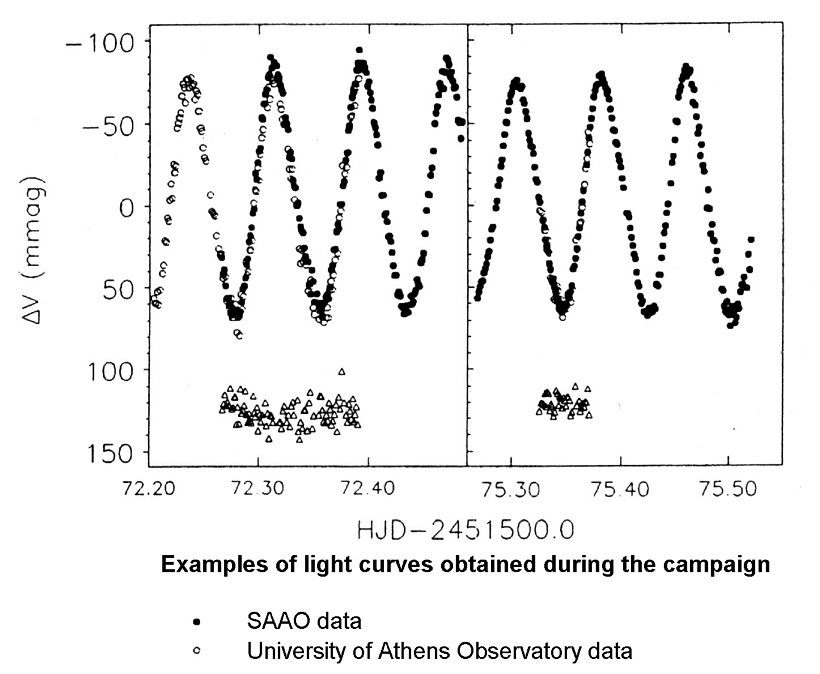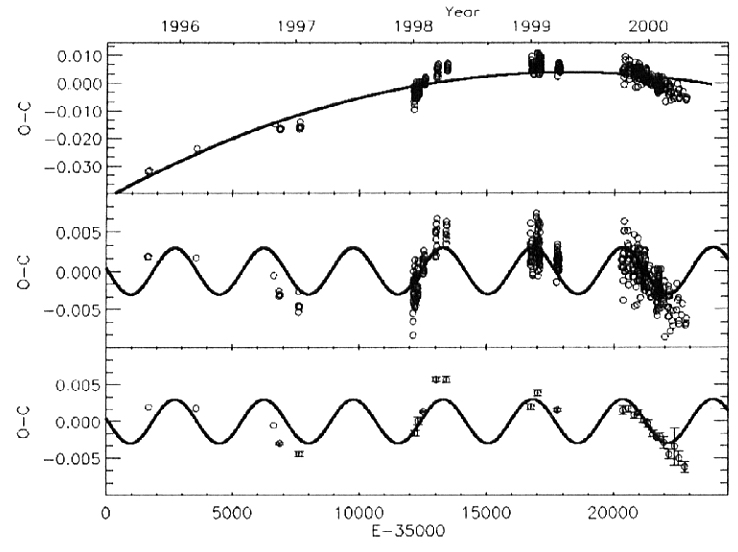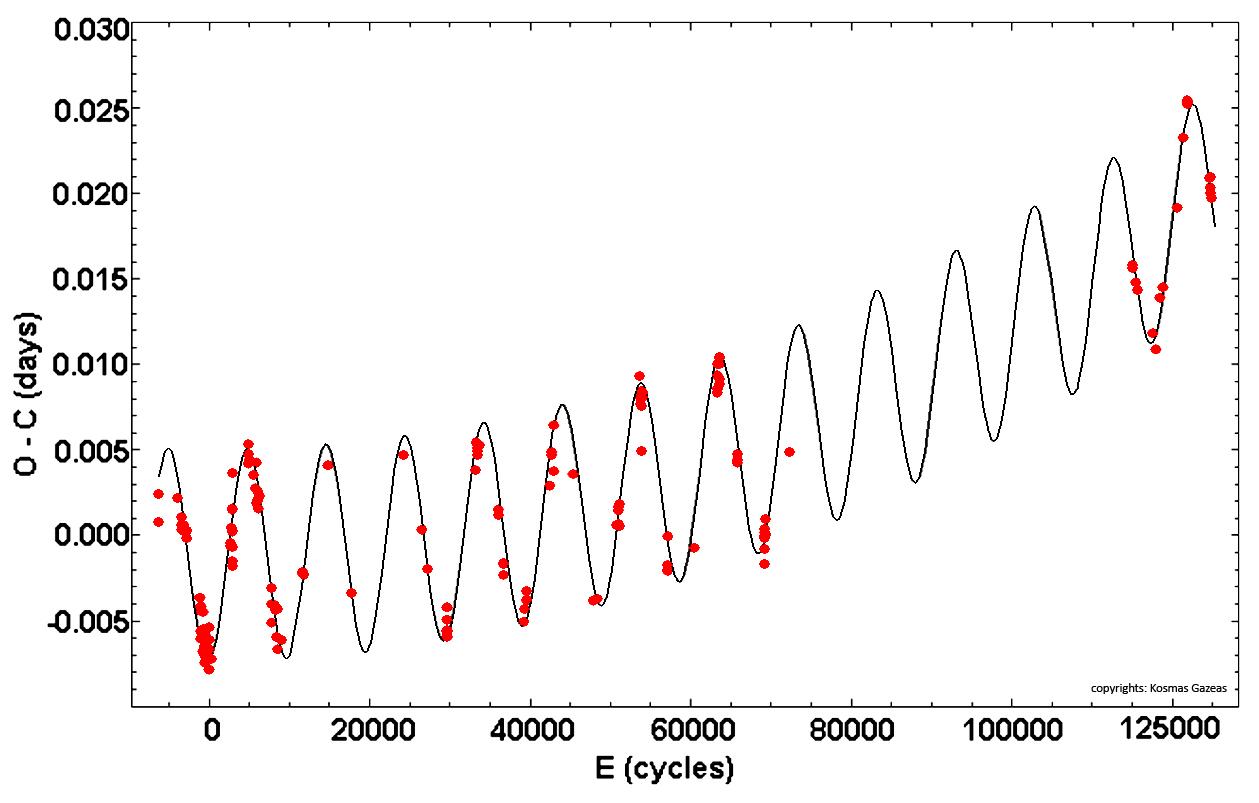Eclipse timings and O-C diagrams
I have obtained many monitoring observations of eclipsing binary systems and pulsating stars with the aim of determining the precise time of minimum and maximum light, respectively. These timings give the absolutely necessary information for the determination of orbital behavior of the members in a binary system, through the O-C diagrams (Observed time – Calculated time). Specialized observing programs aim to study the O-C diagrams and extract information about the Light-Time effect (LITE), basically due to the presence of a third body orbiting a binary system or a second body orbiting around a single star.
The O-C diagrams for the multiple systems XZ Aql and AT Peg. These diagrams uncovered the existance of an invisible companion, orbiting each system in an eccentric orbit.
The long-term monitoring of the pulsating star V1162 Ori
The international campaign on the pulsating star V1162 Ori was initiated in 1999 by Chris Sterken, and its goal was follow-up observations on this High-amplitude delta Scuti Star (HADS), in order to recover its multiple periodicities. The target appeared to have many pulsation frequencies as expected, as well as a very interesting O-C diagram, which show the presence of an orbiting star around V1162 Ori.
V1162 Ori is a High-amplitude delta Scuti Star (HADS), which was the first target ever observed from the University of Athens Observatory (images after Arentoft et al. 2001). The O-C diagram of the times of maxima revealed the presence of an orbiting star around it.
The binary nature of the pulsating star SZ Lyn
The pulsating star SZ Lyn is a perfect example of a HADS within a binary system. This target was observed for several years (2001-2021) and the O-C diagram has revealed the binary nature of this system (Gazeas et al., 2004, CoAst, Vol. 145, 49 and Gazeas et al., 2004, CoAst, Vol. 144, 26).
The High Amplitude delta Scuti Star SZ Lyn is a member of a binary system. The O-C diagram uncovered an invisible companion, with an orbital period of ∼1180 days.
Collaborators on O-C studies include:
Selected publications on O-C studies and times of minima calculations are:





